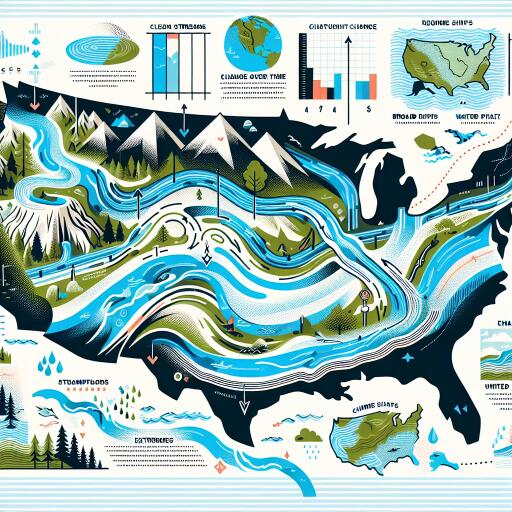Exploring 70 Years of Streamflow Data in the U.S.: A Groundbreaking Analysis
Water is the lifeblood of ecosystems and human societies alike, making the study of streamflow changes critical for environmental science and water resource management. In an era marked by rapidly changing climates and increasing human interventions, understanding the dynamics of streamflow is more important than ever. A recent scientific endeavor has taken a monumental step in this direction by analyzing 70 years of streamflow data across the Conterminous United States (CONUS). This comprehensive study has unveiled patterns, trends, regime shifts, and extremes in streamflow that were previously uncharted, providing invaluable insights into the hydrological changes occurring across the nation.
Why Streamflow Matters
Streamflow, a key component of the hydrological cycle, influences the availability of freshwater resources and the health of aquatic ecosystems. Variations in streamflow can result from natural factors like climate change, man-made interventions such as land management and irrigation, or a combination of both. Recent models and theoretical evidence have pointed to significant deviations in streamflow patterns, including an intensification of wet and dry anomalies, primarily due to anthropogenic influences. Projections indicate that streamflows in the CONUS could stray by up to 30% from the historical averages by 2050, making the study of historical streamflow data crucial for future water resource management and ecosystem conservation.
The Need for a Comprehensive Analysis
Despite the abundance of stream gauge data, a gap persists in the synthesis of this information, particularly concerning ecological and biological impacts, over large geographic regions like the CONUS. Many existing datasets focus on specific local models or are tailored to particular land cover types, leaving a gap in our understanding of streamflow characteristics over broader temporal and spatial scales. Moreover, characterizing long-term streamflow patterns is complex, requiring sophisticated analysis to discern nonlinear relationships and trends across different time scales.
Introducing a New Data-driven Approach
To address these challenges, researchers have embarked on an ambitious project to compile and analyze 70 years of streamflow records from around 8,000 hydrologic stations. Using modern statistical techniques like the Bayesian estimator of abrupt change, seasonal change, and trend (BEAST), this study has broken new ground. BEAST, a progressive algorithm tailored for dissecting complex time series data, has helped in identifying not just trends but also sudden changes in streamflow patterns. These insights are instrumental for detecting underlying mechanisms driving changes in streamflow.
Key Findings and Implications
The study’s findings are illuminating. Increasing occurrences of regime shifts and extremes in streamflow patterns have been observed across the nation, with certain areas, like parts of the Mississippi River Basin, becoming hotspots for high-flow events. By analyzing data in unprecedented detail, researchers have generated a dataset comprising 181 streamflow metrics, offering a rich resource for understanding water resources and informing ecological studies and hydrological models.
This new dataset not only highlights areas and times of significant change but also brings attention to the growing frequency of extreme streamflow events. Such information is vital for managing water resources in a changing climate and can aid in the development of adaptable strategies to ensure water availability and protect aquatic ecosystems in the future.
Conclusion
The recent study represents a significant step forward in our understanding of streamflow in the United States. By leveraging long-term data and advanced statistical methods, the research sheds light on complex hydrological patterns and trends that were previously out of reach. As the world grapples with increasing environmental changes, such comprehensive datasets are crucial for informing policy, guiding conservation efforts, and ensuring the sustainable management of water resources. The findings from this study not only add depth to our understanding of streamflow dynamics but also underscore the importance of continuous monitoring and analysis as we navigate towards a resilient future.










